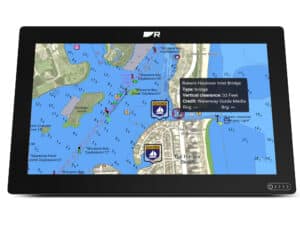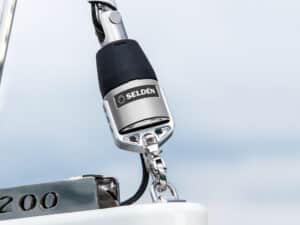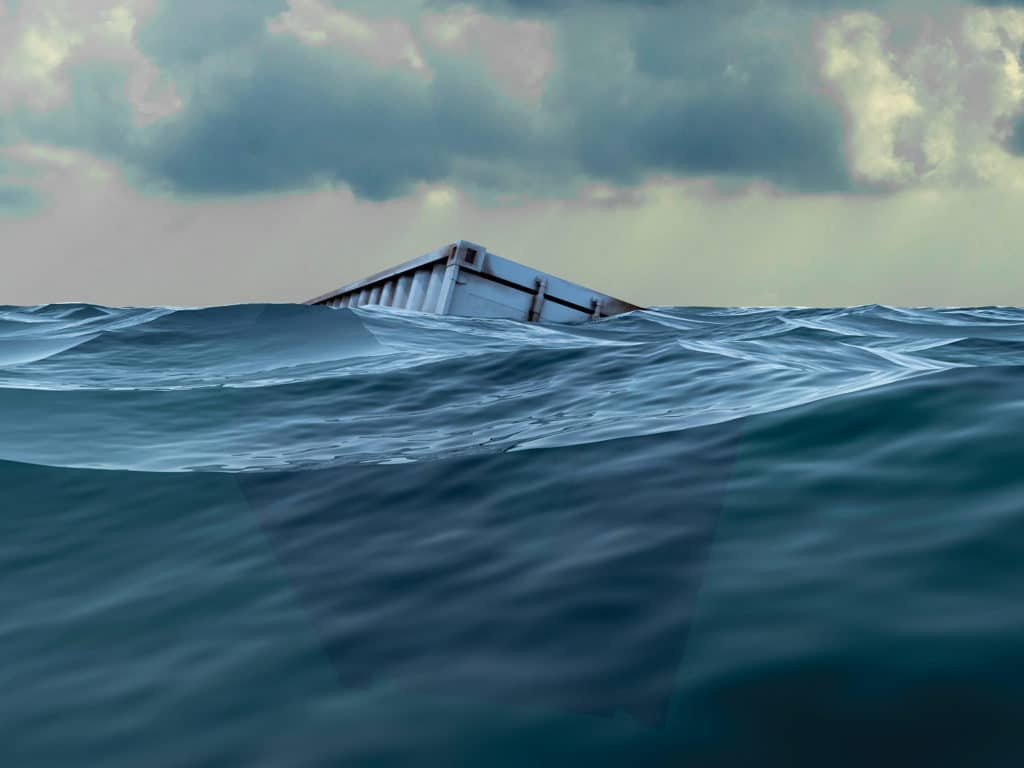
The first lesson that I learned about Pacific Northwest sailing after moving here from New England in 2009 was that Puget Sound doesn’t get much breeze in the summer. The second was that it’s crucial to keep a constant vigil for logs and large branches. Worse still are deadheads. Having attended more than my share of Grateful Dead concerts, I thought I had a good pulse on the latter, but my third lesson was that—in Pacific Northwest vernacular—deadheads refer to logs or entire trees (and root balls) that have taken on so much water that they float vertically, often revealing only a few precious inches of freeboard. Unlike the tie-dyed variety, these deadheads can wreak havoc on hulls. Eleven years in, I’ve had numerous close calls, and I try not to think about the near misses that went unnoticed.
Fortunately, cutting-edge technology now exists that mitigates the danger of hitting myriad obstacles that are increasingly found at sea.
While mariners have fretted about collisions since humankind first took to the water, recent years have seen a massive uptick both in global shipping of containers, which can sometimes wash overboard, and all sorts of other debris. At the same time, a growing number of sailors are exploring the high latitudes, where they encounter icebergs and bergy bits. Then, there’s the jaw-dropping speeds that are being achieved by modern racing and foiling yachts, including IMOCA 60s and the massive 100-plus-foot Ultim trimarans, which regularly exceed 30 knots and 45 knots, respectively. Even “average” cruising boats sail faster today than years ago thanks to their progressively longer waterlines, modern sail plans, and improved weather-routing capabilities. This bolstered performance—from record-setters to family cruisers—is a good thing, but it reduces reaction time if a crewmember spots something in the water.
Tackling the problem head-on, BSB Marine has developed its Oscar collision-avoidance system, which uses daylight and thermal-imaging cameras, artificial intelligence, deep learning, and machine vision to make sailors aware of navigational hazards and give them enough time to make course corrections. Cooler still, some Oscar systems can autonomously control the boat’s autopilot to change course (see below).
In terms of hardware, all Oscar systems consist of a vision unit that has three masthead-mounted cameras, a belowdecks-mounted central processing unit, and a dedicated app to monitor and control the gear.
The vision unit weighs less than 2 pounds and houses two FLIR-built Boson thermal-imaging camera cores, as well as one color (red, green, blue or RGB) daylight camera. The thermal-imaging cameras deliver a horizontal field of view of 50 to 123 degrees, and a vertical field of view of 32 to 71 degrees, depending on the model; higher-end systems use higher-resolution thermal imagers and can operate at longer ranges. The RGB camera offers a 120-degree horizontal view and a 96-degree vertical coverage. With these cameras, developers say Oscar can detect and identify objects in its video stream that are just 4-by-4 pixels.
Aboard a sailboat, the vision unit is mounted on an articulating bracket and can adjust for mast rotation. The unit also has an inertial measurement unit that electronically stabilizes the cameras’ real-time imagery, which is shared with the CPU via an Ethernet cable that is run inside the mast.
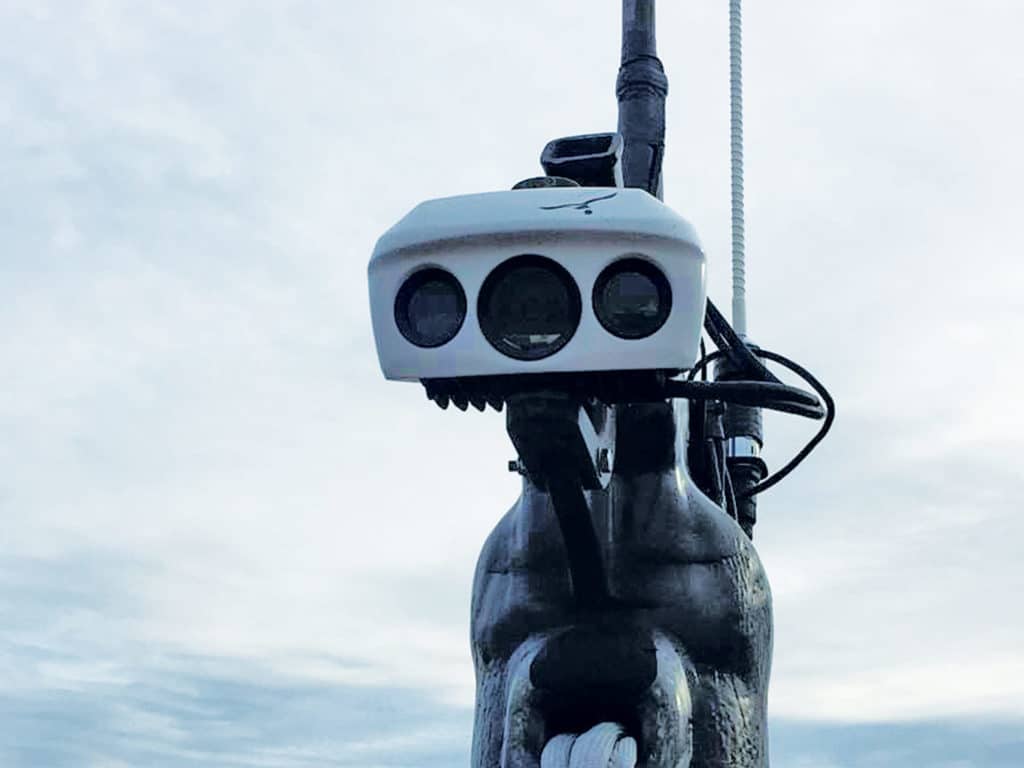
The CPU is a black-box computer that employs machine-vision algorithms and embedded AI to analyze and inspect the incoming video stream in search of dangerous objects. Oscar determines the target’s location and proximity to the vessel based on the camera’s known position and orientation in space, and—when available—it also uses the horizon as a reference point.
“Oscar takes pictures and synchronizes them with the [stabilizer] and CPU, and determines what’s water and what’s not,” explains Raphael Biancale, BSB Marine’s co-founder. “Oscar tries to identify objects based on their picture, and it locates objects around the boat over several frames to determine their speed and direction. Then it calculates the probability of collision.”
In addition to its hardware, Oscar includes an Android-, iOS- and Windows-friendly app, which can reside on a PC, smartphone, tablet or—thanks to the system’s NMEA-2000 compatibility—chart plotter. The app provides a visual reference depicting where a target or multiple targets are on a radar-range-like graphical screen, and it delivers AIS-like information, including the target’s speed, bearing and closest-point-of-approach data. Additionally, the app can trigger onboard alarms, warning of detected targets.
Each Oscar set leaves the factory with an AI system trained at using an image database of 50,000,000 (and counting) images. These images range from common objects such as ships, yachts and aids to navigation, to myriad marine species, to specific nonwater targets such as sargassum seaweed. The database also includes images of the water in all sea states, weather conditions and lighting (daytime and moonlight) scenarios. Oscar uses its onboard AI to compare detected targets with this database to determine what each object is and the threat level that it poses. Additionally, BSB Marine has partnered with several high-profile ocean-racing teams that record all of their Oscar-captured video imagery, which they share with the company once they’re back ashore. Once received, BSB Marine carefully labels, annotates, and compiles this information and updates all Oscar users’ image databases.
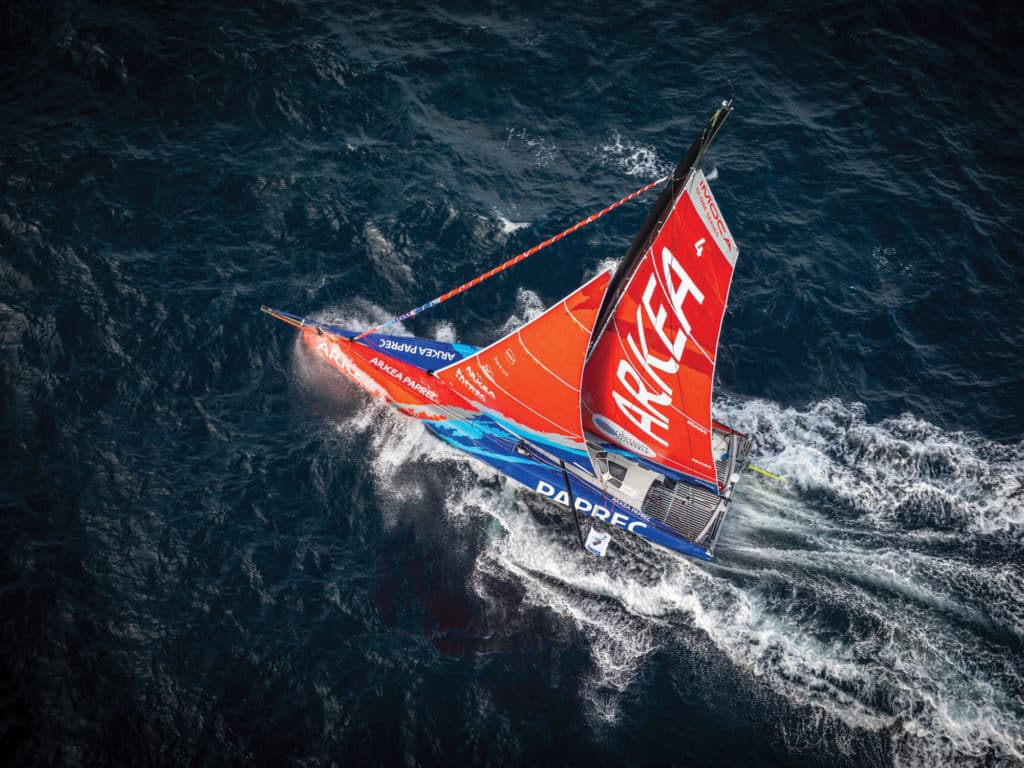
Then, each Oscar system’s ability to identify targets improves as it spends time at sea thanks to its AI and embedded deep-learning capability. Oscar, for instance, knows what ferries look like, and it “learns” to recognize them from different angles and distances, and in various sea states, temperatures and lighting conditions. Newfound “knowledge”—much like the data that’s gathered by racing teams—is shared with other Oscar users to help improve the systems’ abilities to recognize objects and minimize false alarms. According to Biancale, racing crews might see one false alarm per 24 hours, while cruisers might trigger an alarm every few days.
“Identification is valuable,” Biancale says, noting that sleeping whales behave differently than semisubmerged shipping containers or buoys and other aids to navigation. “You need to predict where the whale will go,” he says.
Once Oscar identifies a target in its video stream, its AI starts working. “It looks for any disturbance in the water,” Biancale says. “Oscar detects anything that’s different than the water background, which is known. It tries to detect things that aren’t in the database.” Regardless of whether a spotted target is in its database, Oscar is designed to either alert its crew to its presence so that they can manually confirm a course correction or, if interfaced with an autopilot, evade the object.
BSB Marine is marketing four versions of Oscar to sailors, starting with its top-of-the-line system that’s currently in use aboard high-performance ocean-racing yachts, including IMOCA 60s and Ultims. Oscar Custom Sailing is a fully loaded system that employs dual high-resolution FLIR-built thermal-imaging cameras with a target-detection range of up to 3,040 feet. Given the speeds that IMOCA 60s and Ultims regularly tick off and the fact that 3,040 feet buys only 40 to 60 seconds of warning before a collision, this high-end system autonomously controls the boat’s autopilot system. Once Oscar detects a target, the system performs its identification and filtration work in one second, and it takes an additional 2 seconds to adjust the autopilot’s heading to a safer course.
Biancale notes that grand-prix-level autopilots are always planning an escape route, say if the boat gets hit with an unexpected wind shift or off-kilter wave, and this same functionality helps the boat avoid a crash gybe if Oscar detects a target while the boat is broad reaching or running close to dead downwind.
The Oscar Advanced 640 also employs dual high-resolution FLIR-built thermal-imaging cameras, but they have a somewhat smaller field of view. They still deliver a target-detection range of up to 3,040 feet.
The Oscar Advanced 320 delivers the same autonomous autopilot controls and daylight camera as BSM Marine’s other Oscar systems, but it uses lower-resolution FLIR cameras. The result is a system that delivers a range of up to 1,970 feet, making it suitable for sailboats in the 50- to 80-foot range. At 10 knots, a boat will take 1 minute, 56 seconds to sail this distance.
The cruiser-friendly Oscar One 320 system is also available, and Biancale says it uses the same daylight RGB camera as the other Oscar systems and the FLIR thermal-imaging cameras that are found on the Oscar Advanced 320, with a maximum range of 1,970 feet. The difference, however, involves what happens once the system detects a target. Instead of autonomously changing the autopilot’s course, this system will instead sound alarms and require the skipper or crew to confirm a target via the app before ordering the autopilot to change course. While this might sound like a smaller margin of error, it’s important to remember the speeds involved: At 7 knots, a sailboat takes 2 minutes, 46 seconds to travel 1,970 feet, which should be ample time for a crew that’s maintaining a proper watch to respond to the app’s alarm and course-correction request on their phone, computer or plotter.
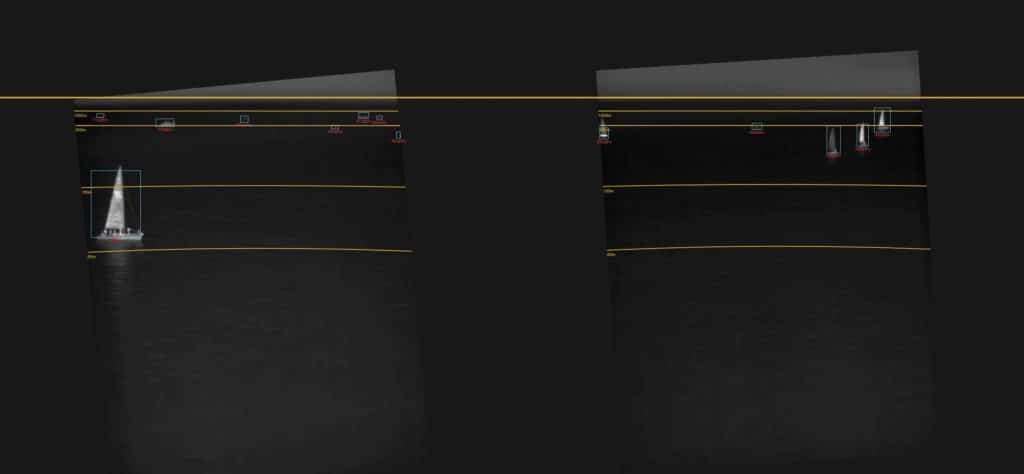
While Oscar’s advantages are easy to spot for anyone who has dodged Pacific Northwest deadheads or debris en route to Bermuda, its disadvantages are harder to spy. There’s cost, of course—systems start at about $15,000—but this becomes quite reasonable when compared with the price of a serious fiberglass repair job or an “opportunity” to test out the life raft (or worse). One could also argue that the masthead cameras and Ethernet cable in the spar add weight aloft, though not much: The cameras and bracket weigh less than 2 pounds, and the cable weighs roughly 1.1 pounds per 30 feet. If weight is indeed critical, lighter halyards could be purchased to compensate.
That said, it’s important to remember that Oscar is designed for offshore use, not for carrying a full press of canvas into San Francisco Bay or the Port of New York and New Jersey. “There’s no limit to the number of targets that Oscar can detect, but there’s a limit to the number that it can evade,” Biancale says, adding that the system can simultaneously dodge “several” targets.
One consideration, however, is that Oscar is an optical-based system, and its cameras are beholden to the laws of physics. For example, Oscar’s daylight RGB camera suffers from a blind spot created by direct sunlight. While this isn’t an issue for the system’s thermal-imaging cameras, these cameras don’t work well in thick fog or rain.
That said, if you’re outfitting a bluewater vessel for a transoceanic cruise, Oscar makes a lot of sense, especially when shorthanded watches, limited sleep and habitually tired eyes are involved. As for spotting deadheads, BSB Marine’s database includes this imagery, freeing sailors to instead use their binoculars to enjoy the panorama around them.
David Schmidt is CW’s electronics editor.
Collateral Losses
Given the sheer scale of international shipping and commerce, it should come as no surprise that some goods get lost in transit. The problem, of course, is that when ships lose cargo, they aren’t accidentally dropping a single shoebox of, say, Nike sneakers. Rather, they’re losing entire shipping containers of goods. While some lucky beachcombers occasionally find washed-up plunder, these wayward containers have the potential—if encountered at the wrong time and angle—to quickly sink boats. And while the world’s oceans contain a heck of a lot of real estate, experts estimate that between 1,400 and 15,000 shipping containers are lost annually. But, notes BSB Marine on a frequently asked questions page: “Containers are either floating or sinking but do not remain in shallow depth because the two stable positions are either floating, when the container mass-to-volume is less than 1 kilogram per liter, or sinking if it is above 1 kilogram per liter. You can experience it by putting objects in a glass of water; trying to have anything just below the surface is next to impossible.”
While this doesn’t absolve these navigational dangers—or their environmental impacts—it does mean that if there’s a container bow on, Oscar can detect it.



